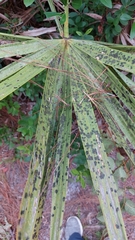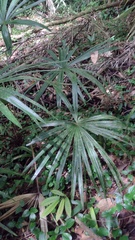©Sarah Kelsey, some rights reserved (CC-BY-NC-SA)
©Sarah Kelsey, some rights reserved (CC-BY-NC-SA)
©Manuel de Jesús Hernández Ancheita, some rights reserved (CC-BY-NC-SA)
©Alejandra Flores, some rights reserved (CC-BY-NC-SA)
©Alejandra Flores, some rights reserved (CC-BY-NC-SA)
©ldoles, some rights reserved (CC-BY-NC)
©jessemae, some rights reserved (CC-BY-NC)
©mmvk, some rights reserved (CC-BY-NC)
©Tania Pérez Fiol, some rights reserved (CC-BY-NC)
©Claude Kolwelter, some rights reserved (CC-BY)
©troutwoman71, some rights reserved (CC-BY-NC)
©Amanda Gabehart, some rights reserved (CC-BY-NC)
©Amanda Gabehart, some rights reserved (CC-BY-NC)
©jacksonfoxworthy, some rights reserved (CC-BY-NC)
©Zoology123, some rights reserved (CC-BY-NC)
©rajasree_lakshmi, some rights reserved (CC-BY-NC)
©María Belén Dri, some rights reserved (CC-BY-NC)
©JUAN FRANCISCO BÁRCENAS GRANIEL, some rights reserved (CC-BY-NC-SA)
©samanthaw0102, some rights reserved (CC-BY-NC)
©bachuaa_357033, some rights reserved (CC-BY-NC)
©bachuaa_357033, some rights reserved (CC-BY-NC)
©Isaac, some rights reserved (CC-BY-NC)
©jeronimo_amaya_lara-11b, some rights reserved (CC-BY-NC)
©rubyclaire, some rights reserved (CC-BY-NC)
©curiousobserver82, some rights reserved (CC-BY-NC)
©alexandrammoret, some rights reserved (CC-BY-NC)
©avyas, some rights reserved (CC-BY-NC)
©esharp, some rights reserved (CC-BY-NC)
©Ingolf Askevold, some rights reserved (CC-BY-NC)
©Ingolf Askevold, some rights reserved (CC-BY-NC)
©Ingolf Askevold, some rights reserved (CC-BY-NC)
©birdieboo, some rights reserved (CC-BY-NC)
©birdieboo, some rights reserved (CC-BY-NC)
©raquelperry, some rights reserved (CC-BY-NC)
©raquelperry, some rights reserved (CC-BY-NC)
©garciadaniel, some rights reserved (CC-BY-NC)
©valeriapacheco, some rights reserved (CC-BY-NC)
©mikeberm12, some rights reserved (CC-BY-NC)
©cas1331, some rights reserved (CC-BY-NC)
©jennaclam, some rights reserved (CC-BY-NC)
©kleiber, some rights reserved (CC-BY-NC)
©kleiber, some rights reserved (CC-BY-NC)
©kleiber, some rights reserved (CC-BY-NC)
©rrubenzahl, some rights reserved (CC-BY-NC)
©vvaron2021, some rights reserved (CC-BY-NC)
©Kristina Necovska, some rights reserved (CC-BY-NC-ND)
©Kristina Necovska, some rights reserved (CC-BY-NC-ND)
©Kristina Necovska, some rights reserved (CC-BY-NC-ND)
©sabellac2022, some rights reserved (CC-BY-NC)
©sabellac2022, some rights reserved (CC-BY-NC)
©JENNIFER ARLETTE CEDILLO DE LA CRUZ, some rights reserved (CC-BY-NC)
©Peter, some rights reserved (CC-BY-NC-SA)
©Eidis Peñalba, some rights reserved (CC-BY-NC)
©lirafossa, some rights reserved (CC-BY-NC)
©lirafossa, some rights reserved (CC-BY-NC)
©aline_aboultaif, some rights reserved (CC-BY-NC)
©evelynmoreno2021, some rights reserved (CC-BY-NC)
©evelynmoreno2021, some rights reserved (CC-BY-NC)
©kathrynsmith35, some rights reserved (CC-BY-NC)
©stephaniemeza, some rights reserved (CC-BY-NC)
©hpate5128, some rights reserved (CC-BY-NC)
©grivera2021, some rights reserved (CC-BY-NC)
©michellea55, some rights reserved (CC-BY-NC)
©Kudaibergen Amirekul, some rights reserved (CC-BY-SA)
©inarumoctezuma, some rights reserved (CC-BY-NC)
©seanalfrey, some rights reserved (CC-BY-NC)
©maddieguincho, some rights reserved (CC-BY-NC)
©solitaryvireo, some rights reserved (CC-BY-NC)
©amuenzer, some rights reserved (CC-BY-NC)
©gphelps2021, some rights reserved (CC-BY-NC)
©llinenberger2021, some rights reserved (CC-BY-NC)
©raugusme, some rights reserved (CC-BY-NC)
©rockydev, some rights reserved (CC-BY-NC)
©rockydev, some rights reserved (CC-BY-NC)
©jessodimegwu, some rights reserved (CC-BY-NC)
©raugusme, some rights reserved (CC-BY-NC)
©alerebours2021, some rights reserved (CC-BY-NC)
©llinenberger2021, some rights reserved (CC-BY-NC)
©Joideth Bellido, some rights reserved (CC-BY-NC)
©ronaldranjit2002, some rights reserved (CC-BY-NC)
©koyeg, some rights reserved (CC-BY-NC)
©koyeg, some rights reserved (CC-BY-NC)
©mabdulmajeed2021, some rights reserved (CC-BY-NC)
©hannahjamesssss, some rights reserved (CC-BY-NC)
©mossa2021, some rights reserved (CC-BY-NC)
©mossa2021, some rights reserved (CC-BY-NC)
©mossa2021, some rights reserved (CC-BY-NC)
©anair2020, some rights reserved (CC-BY-NC)
©widjina01, some rights reserved (CC-BY-NC)
©lexiebaker, some rights reserved (CC-BY-NC)
©lexiebaker, some rights reserved (CC-BY-NC)
©sarahmurphyy, some rights reserved (CC-BY-NC)
©natmag13, some rights reserved (CC-BY-NC)
©jonah_cohen, some rights reserved (CC-BY-NC)
©anson_fl, some rights reserved (CC-BY-NC)
©oliviadaust, some rights reserved (CC-BY-NC)
©Cindy, some rights reserved (CC-BY-NC)
©Cindy, some rights reserved (CC-BY-NC)
©dolores_margni, some rights reserved (CC-BY-NC)
©yolined, some rights reserved (CC-BY-NC)
©vsingh2020, some rights reserved (CC-BY-NC)
©gjv19, some rights reserved (CC-BY-NC)
©agreen2019, some rights reserved (CC-BY-NC)
©kqueen, some rights reserved (CC-BY-NC)
©slamande2020, some rights reserved (CC-BY-NC)
©A. Moore, some rights reserved (CC-BY-NC)
©agreen2019, some rights reserved (CC-BY-NC)
©wanderingeden, some rights reserved (CC-BY-NC)
©mondyv, some rights reserved (CC-BY-NC)
©tylerjbeeler, some rights reserved (CC-BY-NC)
©Nick Lambert, some rights reserved (CC-BY-NC-SA)
©michaelsmith_03, some rights reserved (CC-BY-NC)
©tscharfenstine_, some rights reserved (CC-BY-NC)
©Joe Mathiau, some rights reserved (CC-BY-NC)
©Nick Lambert, some rights reserved (CC-BY-NC-SA)
©Nick Lambert, some rights reserved (CC-BY-NC-SA)
©Nick Lambert, some rights reserved (CC-BY-NC-SA)
©dasha-, some rights reserved (CC-BY-NC)
©Nick Lambert, some rights reserved (CC-BY-NC-SA)
©Nick Lambert, some rights reserved (CC-BY-NC-SA)
©John D Reynolds, some rights reserved (CC-BY-NC)
©Charlie Glasser, some rights reserved (CC-BY-NC-SA)
©Luke Smith, some rights reserved (CC-BY-NC)
©bennett-s, some rights reserved (CC-BY-NC)
©bluecrew, some rights reserved (CC-BY-NC)
©lithuanianamerican, some rights reserved (CC-BY-NC)
©topher_sands1, some rights reserved (CC-BY-NC)
©mpann1380, some rights reserved (CC-BY-NC)
©squidprobe, some rights reserved (CC-BY-NC)
©bettinaivy, some rights reserved (CC-BY-NC)
©disneynerd, some rights reserved (CC-BY-NC)
©Dixie, some rights reserved (CC-BY-NC)
©arkim, some rights reserved (CC-BY-NC)
©arkim, some rights reserved (CC-BY-NC)
©arkim, some rights reserved (CC-BY-NC)
©marielacm27, some rights reserved (CC-BY-NC)
©jene, some rights reserved (CC-BY-NC)
©skylarraney, some rights reserved (CC-BY-NC)
©skylarraney, some rights reserved (CC-BY-NC)
©skylarraney, some rights reserved (CC-BY-NC)
©marielacm27, some rights reserved (CC-BY-NC)
©John D Reynolds, some rights reserved (CC-BY-NC)
©John D Reynolds, some rights reserved (CC-BY-NC)
©Arlenny, some rights reserved (CC-BY-NC)
©lunarjade, some rights reserved (CC-BY-NC)
©lunarjade, some rights reserved (CC-BY-NC)
©jwf1983, some rights reserved (CC-BY-NC)
©John D Reynolds, some rights reserved (CC-BY-NC)
©Alejandra Flores, some rights reserved (CC-BY-NC-SA)
©Jimmy Bryan, some rights reserved (CC-BY-NC)
©Jimmy Bryan, some rights reserved (CC-BY-NC)
©Alejandra Flores, some rights reserved (CC-BY-NC-SA)
©Alejandra Flores, some rights reserved (CC-BY-NC-SA)
©Alejandra Flores, some rights reserved (CC-BY-NC-SA)
©Alejandra Flores, some rights reserved (CC-BY-NC-SA)
©John D Reynolds, some rights reserved (CC-BY-NC)
©Alejandra Flores, some rights reserved (CC-BY-NC-SA)
©Alejandra Flores, some rights reserved (CC-BY-NC-SA)
©Jimmy Bryan, some rights reserved (CC-BY-NC)
©Jimmy Bryan, some rights reserved (CC-BY-NC)































































































































































